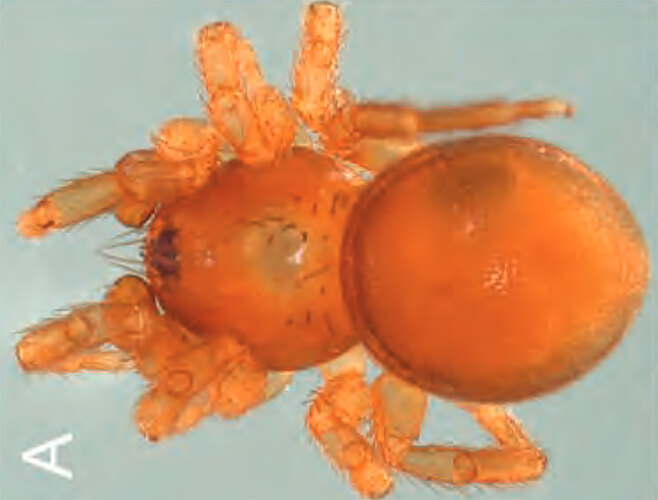Robust Goblin Spider Opopaea robusta Baehr & Ott, 2013
Fauna Portal species: 251Diagnosis
(after Baehr et al. 2013): Males and females of Opopaea robusta resemble none of the WA species but are similar to O. martini from New South Wales in having the posterior median eyes largest, a high shouldered carapace and scuto-pedicel region high, about 1 ½ diameter of pedicel, without scutal ridges and pedicel without triangular lateral extensions. Males can be distinguished by the pedipalp bulb ventrally slightly bulging, tip prolaterally spatulate with striated ridge and small incision, ‘fenestra’ opposite incision. Females can be separated by the epigastric area in ventral view having epigastric fold (EF) widely triangular with small concavity and two chitinized edges.
Within the context of the oonopid fauna of Barrow Island, O. robusta is most similar to O. rugosa due to the rounded abdomen, but the abdomen is less rugose.
Status
- native
Linnean Holotype
Australia
- Western Australia
Fauna Portal Records
The map shows all records that have been verified as part of the Fauna Portal project and may not represent the true distribution of a species. Specifically, for described species, check the link to the Atlas of Living Australia on this page for potential wider distributions. Fauna Portal Reference specimens and Linnean types are shown in red. If you identified a specimen that exceeds the distribution of an undescribed species as illustrated here, please contact the Fauna Portal team who can assist with the lodgement of the specimen in a public institution and display on the map.
Publications
(2013): The goblin spider genus Opopaea in Australia and the Pacific islands (Araneae: Oonopidae). Memoirs of the Queensland Museum - Nature. 58: 107 - 338

